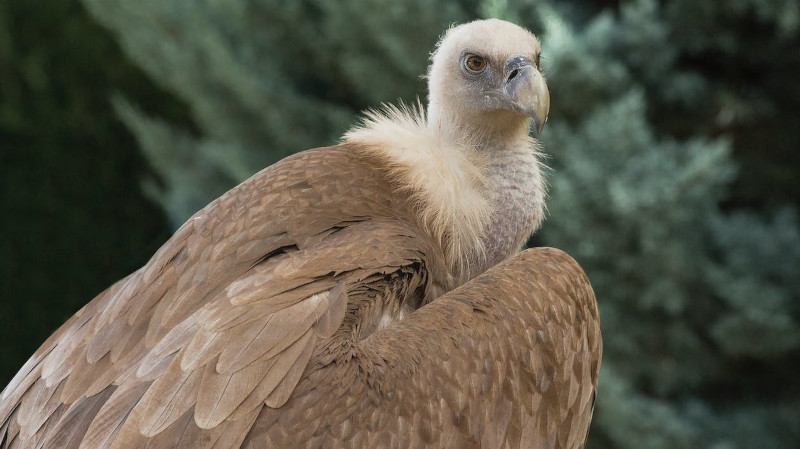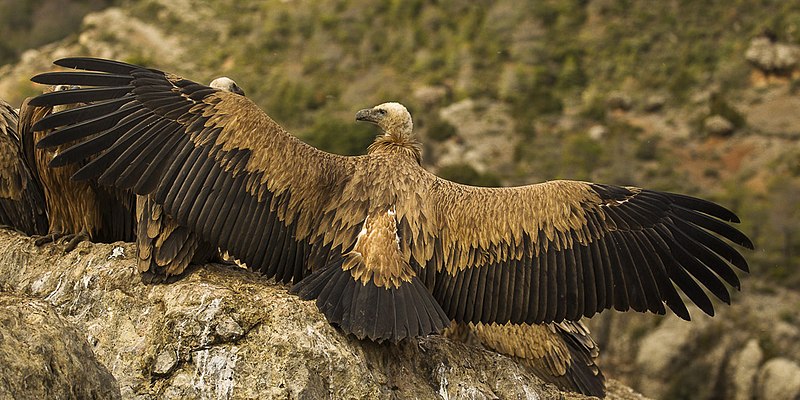
Eurasian Griffon Vulture Facts
- This physically imposing creation of Nature and evolution typically goes by the informative common name of the Eurasian Griffon Vulture. It also holds at least one other, less often used general title, though. That’s the similar moniker of griffon vulture.
- Among scientists and related professionals, though, it typically goes by its formal designtion. Thakfully, that epithet remains much simpler for the layperson to pronounce that most such. That’s because it has the short and simple tag Gyps fulvus.
- The animal received that appellation due to the efforts of Carl Ludwig von Hablitz. Though primarily a botanist, the respected Russian scientist recorded the first official recognition of it as a separate and distinct species. He managed that feat in 1783.
- Fortunately, the amazing Eurasian Griffon Vulture seems to still be managing a population base that’s both stable and sufficient. That also appears to hold true across the entirety of its range. The IUCN therefore currently lists the bird as Least Concern.
- The animal nevertheless still faces multiple threats to its continued existence as a species. Most of these stem from the actions of mankind. It’s frequently endanged by poison traps set out by people. Yet it also faces the danger posed by climate change.
Related Articles

Eurasian Griffon Vulture Physical Description
The remarkable Eurasian Vulture Griffon quickly captures the attention of those who encounter one. Though few consider it beautiful, it nevertheless has its own brand of interest. All species on earth have their place and attractions if one views them properly.
This particular member of its specific Family stands out from many of those relatives for several reasons. For one, it boasts several subspecies. The sheer size of the bird also qualifies as one of those. While not the largest of them all, it’s still above-average in this regard.
It distinguishes itself from its kin in this respect in yet another manner. That’s the fact that it displays an uncommon type of the physiological characteristic of sexual dimorphism. This holds true since the animal shows gender-based differences in several categories.
Overall, individuals of the avian attain a length of roughly 37 – 48 in (93 – 122 cm). Wingspan also varies, ranging from 7.5 – 9.2 ft (2.3 – 2.8 m). Females do tend to reach slightly greater measurements in both these regards than their male counterparts, however.
Weights for the impressive animal, though, remain quite similar. Females average about 14.3 – 23 lb (6.5 – 10.5 kg). The males of the avian, though, attain a mean weight ranging from 13.7 – 23 lb (6.2 – 10.5 kg). Exceptional individuals do occur, however, regardless of sex.
But the Eurasian Griffon Vulture displays its gender-based differences in yet another way. It’s a bit of an unusual one, though. The males typically possess noticeably larger heads and longer bills. This does make distinguishing the genders slightly easier for the observer.
In terms of color, the intringuing creature presents a striking image. The majority of the body shows a light brown or tan shade. Its wings, however, present sharply darker brown hues. The large animal also manifests an off-white head, along with dark brown tail feathers.
- Kingdom: Animalia
- Phylum: Chordata
- Class: Aves
- Order: Accipitriformes
- Family: Accipitridae
- Genus: Gyps
- Species: G. fulvus
Eurasian Griffon Vulture Distribution, Habitat, and Ecology
The impressive Eurasian Griffon Vulture evolved as native to a moderately broad swathe of the surface of the earth. The exact region its zone of habitation, however, is clearly indicated by its name. That’s true since the avian inhabits parts of both Europe and Asia.
Within its European range, though, its presence remains restricted mainly to those countries that abut the Mediterannean Sea. This includes countries such as Greece and Cyprus. From there, however, the bird extends its range through Arabia and Turkey to central Asia.
Nature provided this specific species of vulture with a moderate degree of adaptability in terms of its choice of habitat. This provides it with an evolutionary advantage that some of its kindred lack. It’s adapted to a range of ecosystems across its native range.
In parts of its territory, it resides quite close to sea level. Yet, in other sections where the animal appears, it occasionally live at altitudes of up to 5,905 ft (1,800 m). On average, though, the creature typically builds its nests at heights roughly in the middle of these.
But, regardless of the altitude at which it makes its home, the bird displays decidedly strong preference for the type of ecosystem. This principally consists of regions of either open shrub and grasslands, or cliffs and rocky slopes. Few individuals live outside of such areas.
Like its relatives around the world, the Eurasian Griffon Vulture developed as a carnivore. Like them, it also mainly feeds as a scavenger, consuming the flesh of carcasses it finds while soaring high. It’s also highly opportunistic, showing no preference for type or size of animal.
The animal sometimes lives alone, but often forms loose colonies. It typically breeds on rocky cliff faces, where it places its nest for safety. Females generally lay a single egg, which takes about two months to hatch. An average lifespan in the wild is currently unknown.
Species Sharing Its Range
Check out our other articles on 5 Fabulous Mammals of Florida, Southern Darwin’s Frog, Lake Atitlan, Strawberry Tree, Marbled Polecat, Lime Butterfly, Mangrove Monitor


